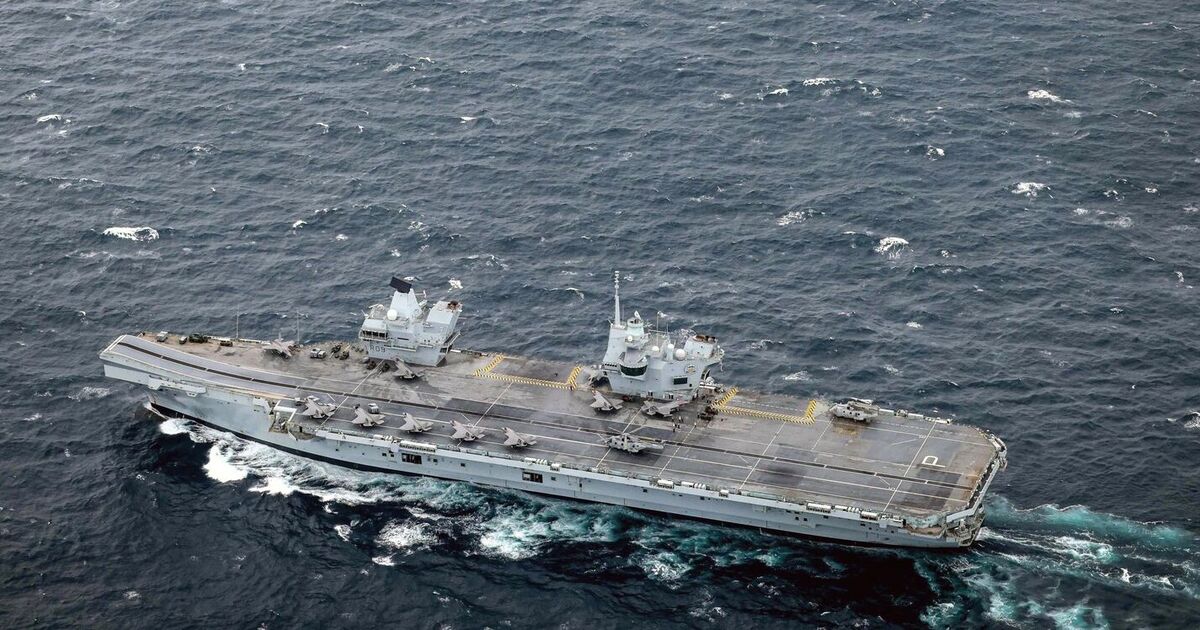Britain may be facing a defining moment in the crisis between the United States and Iran. President Trump has made no secret of his willingness to strike Iranian nuclear and military targets, and the United States has the firepower to finish the job alone. Israel has already done much of the heavy lifting.
But as Washington edges closer to action, the UK has a golden opportunity to demonstrate that it remains a dependable and relevant ally. This is not about joining a bombing campaign or committing to a regional war. It is about presence, posture, and credibility. HMS Prince of Wales, Britain’s second aircraft carrier, is already in the Indian Ocean. Repositioning her to the Persian Gulf would send a strategic message: the UK still turns up when it matters.
The 65,000-tonne behemoth is currently deployed as part of a task group to the Far East, where her purpose is to show Xi Jinping’s China that regional challenges will not go unanswered.
Diverting the Royal Navy flagship temporarily – along with her 23 F-35s and ISR capabilities – to the Gulf would demonstrate that she is more than a parade on water.
This would also help correct a recent failure.
Britain came under fire for declining to deploy a carrier to the Red Sea during operations to protect commercial shipping from Houthi attacks. Washington noted the absence.
The Prince of Wales now gives Britain a second chance to show utility and resolve.
Its deployment would offer real operational value.
It could provide defensive coverage for the increasingly isolated frigate HMS Richmond, currently stationed in Bahrain, where it could also act as a maritime command and control hub for land-based elements of the US Fifth Fleet.
It could support surveillance and reconnaissance missions, offer aerial refuelling, and help protect regional British bases from retaliatory strikes by Iran.
Crucially, it would act as a powerful deterrent to any Iranian notion of blockading the Strait of Hormuz – the vital 23-mile-wide artery through which around 20 percent of the world’s oil, nearly 18 million barrels per day, flows.
Foreign Secretary David Lammy is currently engaging in shuttle diplomacy between the US and Iran in a bid to de-escalate tensions. But the reality is that the UK’s decision to share intelligence means it is already more involved than the quiet bystander it claims to be.
And while Attorney General Lord Hermer has raised legal concerns about UK complicity in bombing raids on Iran, this is unlikely to deter the US.
Its B-2 stealth bombers – equipped with the bunker-busting ordnance capable of striking Fordow’s underground enrichment site – are stationed at Diego Garcia in the British-controlled Chagos Islands.
The US does not routinely seek British permission to launch from there. In any case, it could fly B-2s directly from Whiteman Air Force Base in Missouri.
The stakes are real.
Fourteen RAF Typhoons are already in Cyprus. Around 100 British troops remain in Iraq. Iranian officials have threatened to target Western bases if the UK is seen as a participant.
But the presence of a carrier could itself serve as a deterrent.
More importantly, it would demonstrate that Britain is not passive – that it is prepared to act in defence of its own people and its closest allies.
This form of engagement carries minimal risk.
Legal advice suggests Britain should avoid direct offensive action unless it can be clearly justified as self-defence. Deploying the Prince of Wales would not cross that line. It would stabilise the region without escalating the conflict.
There is also growing political urgency.
The Signal leaks exposed how some in Washington view their allies. Vice President JD Vance was revealed to have told colleagues he “just hate[s] bailing Europe out again” in the context of US strikes on the Houthis.
Defence Secretary Pete Hegseth went further, calling Europe’s dependence on US military power “pathetic.”
These are not fringe voices. They reflect the thinking of a government increasingly sceptical of transatlantic burden-sharing.
Britain’s best answer to that sentiment is not another statement. It is action.
A visible Royal Navy presence is the clearest way to show that Britian still carries weight. The Prince of Wales does not need to launch a single strike. Its value lies in where it sails, and what that signals.
If ministers truly want to restore Britain’s standing on the world stage, this is the moment to act.
The carrier is already on an operational deployment. It is close enough to matter – and it gives the UK a unique chance to show it remains a credible partner in a dangerous world.
The US already has already deployed its Carrier US Vincent to the region, and the Nimitz is currently steaming her way to join her.
It could be, then, that President Trump feels HMS Prince of Wales is better off continuing her current operation.
But we should at least offer. Flexibility and operational responsiveness are supposed to be at the heart of carrier operations.
It’s time to prove it.
